The Hoya is an easy-to-care-for flowering succulent plant native to Asia. They don’t grow very fast and can make excellent plants to hang or put next to your window sill.
They have thick and glossy leaves and so have come to be popularly known as Wax plants. In addition to their attractive foliage, Hoyas also produce unique star-shaped flowers.
But these tropical plants only produce their fragrant blossoms when their unique requirements are met.
One of these is, unlike the vast majority of plants, Hoya likes to have smaller shallower planters.
Table of Contents
Do Hoyas Like Small Pots?
Hoyas do like small pots. Hoyas have the ability to thrive in the same pot for years. Because they’re slow growers, an indoor Hoya will almost never need a planter bigger than 6 inches in diameter. In fact, a Hoya will bloom best if its roots are constricted by a small pot rather than if the roots are allowed to grow freely.
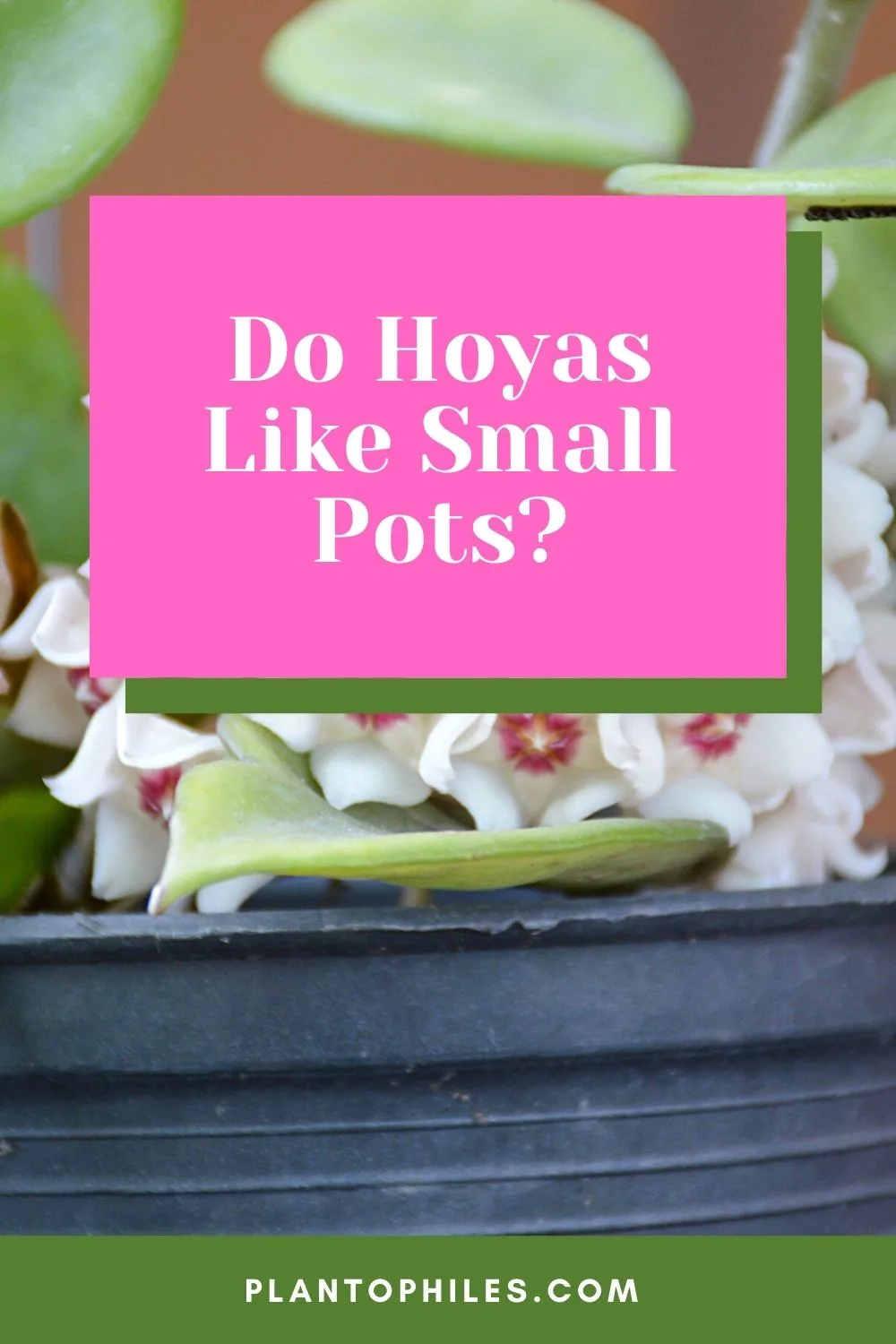
Do Hoyas Like Small Pots?
Why Hoyas Do Not Like Large Pots
When we say Hoyas do well in small pots, it is not implied that they can’t do well in large pots.
The natural conditions in which a plant has grown and evolved over centuries are the best conditions for that plant to grow in.
Hoyas have a very compact root system that only acts to anchor the plant and absorb minute amounts of moisture.
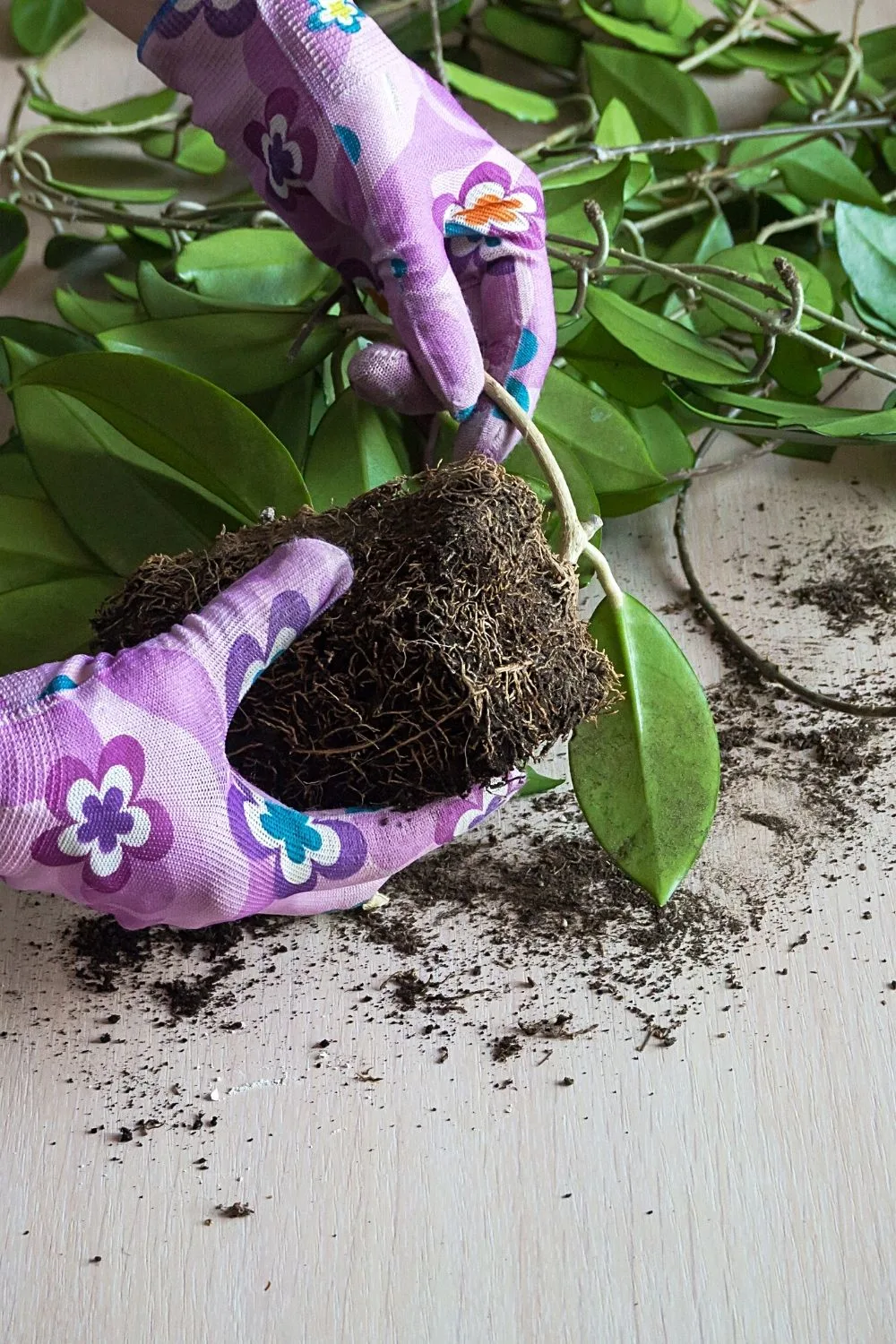
Hoya plants have very compact root systems that act as their anchor and absorb minute amounts of moisture
Hoyas do not require a lot of water and so naturally grow out from tree trunks and rock crevices.
Mimicking these natural conditions for Hoyas is the best way to help them thrive and bloom at full potential.
Hoyas are found growing on trees and rocks and not in the ground, where plants should be, which tells us that these plants do not like to be surrounded by a lot of moisture.
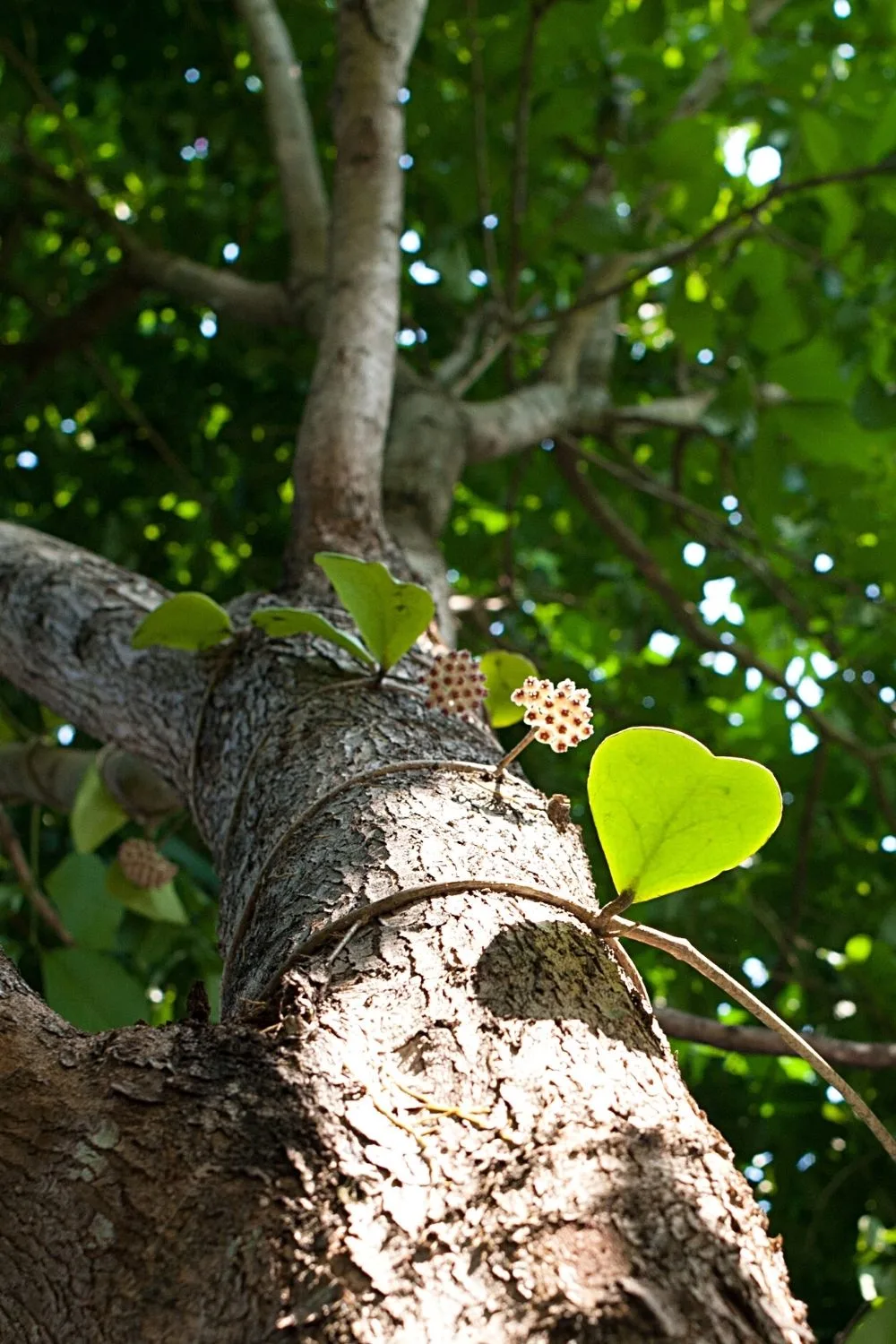
Hoyas don’t require too much water as they grow on tree trunks and rock crevices in nature
Following that, it is recommended to use small, shallow pots for Hoyas rather than large pots that hold greater amounts of soil.
More soil in large pots means more water retention, and your Hoya plants will sit around in excess moisture for longer than they should.
In a small pot, Hoyas are able to absorb the moisture they need, and the excess water evaporates quite quickly.
Ideal Type of Pots for Hoyas
A small and shallow pot is nearly not a good description to help plant owners choose the right pot for their Hoyas.
Along with the size or depth of the pot, there are a few other factors that need to be considered when potting your Hoya plant.
The material the pot is made of for potting Hoyas is a much-debated topic.
Although terra cotta pots are a good choice for plants prone to over-watering, many people hold that Hoya roots can grow wide in the pot and adhere to the clay pot surface strongly.

Though terra cotta pots are great for plants prone to overwatering, the Hoya’s roots can adhere to the clay pot strongly
The porous texture of terra cotta pots helps Hoya roots stick to the pot firmly, making it a tedious task when it comes to taking the plant out of the pot for repotting.
This can often lead to the roots completely ripping off the plant when the plant is pulled out of the pot, dealing severe damage to a Hoya.
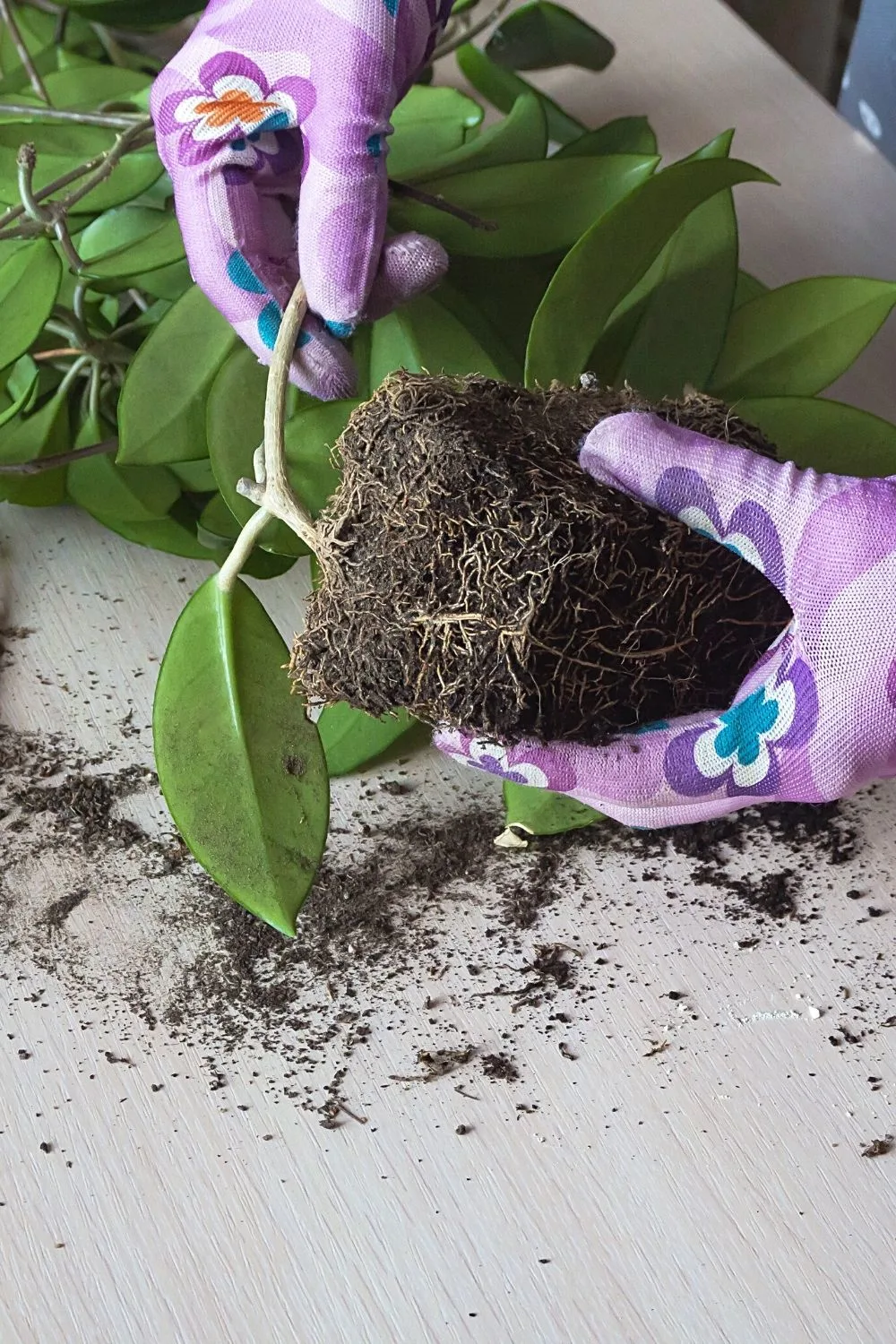
If you’re not careful enough when repotting your Hoya plant, you can accidentally rip off its roots
As an alternative, plastic planters are recommended for Hoyas as the roots can’t stick to the plastic surface.
But plastic pots are dangerous to use when it comes to a water-phobic plant such as a Hoya.
It should be noted that terra cotta pots provide a very aerated atmosphere to the roots, just as one a Hoya will enjoy in nature.
Just because terra cotta pots might cause a problem while repotting, which is required only once in several years, should not prevent you from using a pot that will help your Hoyas thrive.
The problem of getting a well-established plant out of a terra cotta planter can be dealt with by soaking the plant, as well as the pot in water so that the roots and soils can loosen up.
This will make taking the plant out of its pot much easier.
Furthermore, you should ensure that the pot has a good-sized drainage hole as water can get stuck in the soil even when a shallow pot is being used.
Potting Mix for Hoyas
The ideal potting mix for Hoyas is ½ part regular potting soil and ½ part succulent potting mix.
The mix used for potting succulents contains sand in a significant proportion, providing a well-draining atmosphere for Hoya roots.
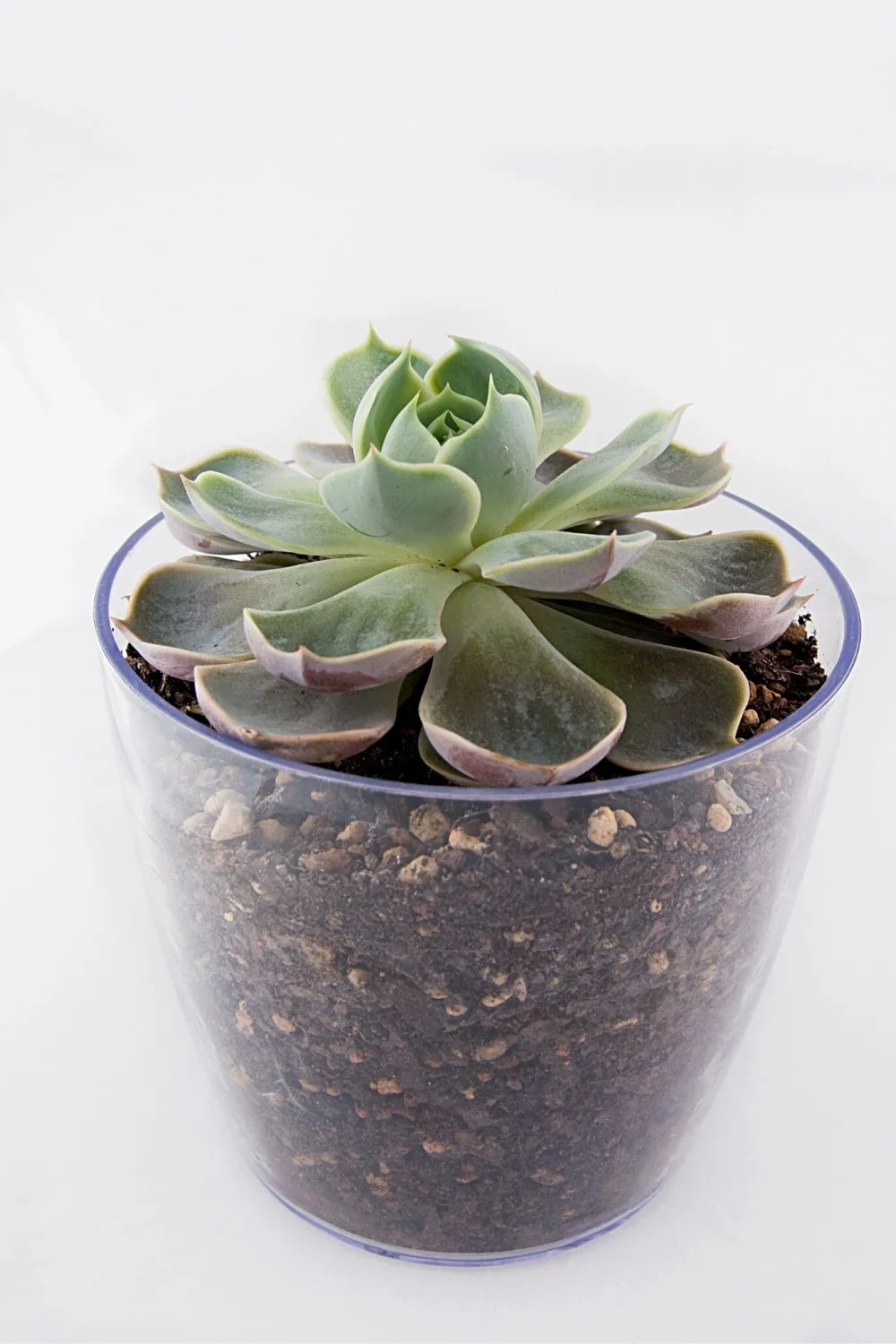
The potting mix for succulents is also great for Hoyas as it contains sand, making it a well-draining soil
Hoyas in Nature
Hoyas, native to the tropical or subtropical regions of Asia, are most often found growing out of tree trunks, rock crevices, and holes in walls.
The tropical succulents grow epiphytically, which means their roots do not dig down into the soil but only act as adherents to the surface the plant is growing on.
Because they can survive prolonged periods without water, Hoya roots do not dig down into the soil and are able to absorb enough moisture from the surface only.
Epiphytic plants are also known as ‘air plants’ because they can survive on the humidity present in the air only.
This is also why Hoyas are not used to having water or moisture around their roots for any period of time longer than a few hours.
Plant parents caring for Hoyas need to know that they cannot follow the same watering patterns for Hoyas as they do for most other plants.
Hoyas only need a small amount of water that can dry out relatively quickly.
Frequently Asked Questions about Whether Hoyas Like Small Pots
How long can Hoyas go without repotting?
Hoya plant roots do not grow deep into the soil, and the plant thrives when roots are constricted. This means Hoya plants can go in one pot for quite a long time as compared to other plants. Hoya plants can easily go for 5 years without repotting, although mild fertilization is advised once a year.
Is a hanging pot better for Hoyas?
As there is a wide variety of Hoyas out there, it depends on which variety you’re choosing the pot for. A vining or trailing Hoya would look better in a hanging pot rather than a bushy variety.

Daniel has been a plant enthusiast for over 20 years. He owns hundreds of houseplants and prepares for the chili growing seasons yearly with great anticipation. His favorite plants are plant species in the Araceae family, such as Monstera, Philodendron, and Anthurium. He also loves gardening and is growing hot peppers, tomatoes, and many more vegetables.


